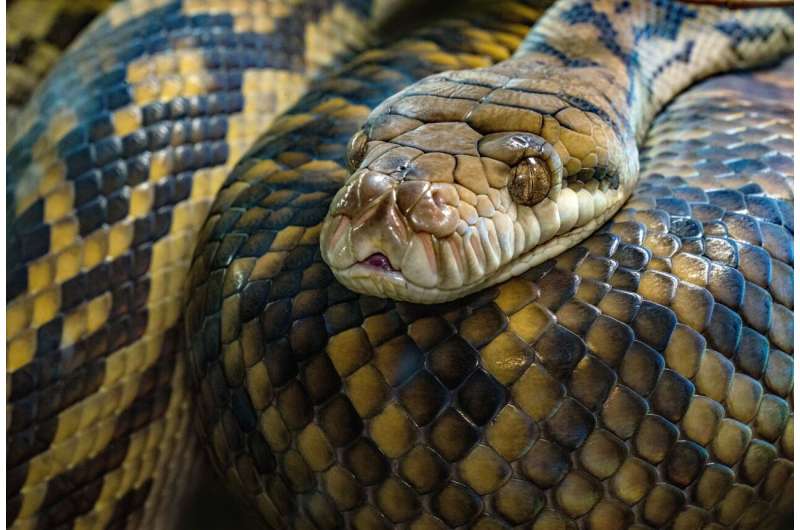New 'bone-digesting' cell type discovered in pythons

Sadie Harley
scientific editor

Robert Egan
associate editor

Research into the intestinal cells of Burmese pythons has revealed the existence of a previously unknown cell type, responsible for completely absorbing the skeletons of their prey.
The research is published in the Journal of Experimental Biology.
Most carnivores eat only the flesh of their prey and avoid eating the bones or pass them undigested, but many snakes and reptiles often consume their prey whole, including the bones. The cellular mechanisms that enable them to do this have remained mysterious until now.
Snakes that are fed on boneless prey suffer from calcium deficiencies, and so bones are a required part of their diet. However, absorbing all the available calcium from a skeleton could result in too much calcium entering their bloodstream.
"We wanted to identify how they were able to process and limit this huge absorption of calcium through the intestinal wall," says Dr. Jehan-Hervé Lignot, a Professor at the University of Montpellier.
Dr. Lignot and his team analyzed the enterocytes, or intestinal lining cells, of Burmese pythons (Python bivittatus) using both light and electron microscopy alongside blood calcium and hormone measurements. This study revealed the presence of a new type of cell along the intestine that is involved in the production of large particles made from calcium, phosphorus and iron.
"A morphological analysis of the python epithelium revealed specific particles that I'd never seen in other vertebrates," says Dr. Lignot. These particles were found inside the internal "crypt" of specialized cells that differed from traditional intestinal cells.
"Unlike normal absorbing enterocytes, these cells are very narrow, have short microvilli, and have an apical fold that forms a crypt," adds Dr. Lignot.
To assess the function of these new cells, the intestinal cells of pythons were analyzed after they had been fed on three different diets: a normal diet of whole rodents, a low-calcium diet of "boneless prey" and a calcium-rich diet of boneless rodents supplemented with injections of calcium.
The researchers found that when fed with boneless prey, these calcium and phosphorus-rich particles were not produced, but when fed with either a whole rodent or the calcium-supplemented diet, the cell's crypt filled with large particles of calcium, phosphorus and iron. No bone fragments were found in the python's feces, confirming that skeletons were always entirely dissolved inside the body.
This new specialized bone-digesting cell has now been identified in several python and boa species, as well as the Gila monster, a venomous lizard native to the Southwestern United States and Mexico.
However, bone-filled diets aren't limited to reptiles and there are many other carnivores that eat bony animals whole. "Marine predators that eat bony fish or aquatic mammals must face the same problem," says Dr. Lignot. "Birds that eat mostly bones, such as the bearded vulture, would be fascinating candidates too."
This research was also presented at the Society for Experimental Biology Annual Conference in Antwerp, Belgium on 9 July 2025.
More information: Diet-dependent production of calcium- and phosphorus-rich 'spheroids' along the intestine of Burmese pythons: identification of a new cell type?, Journal of Experimental Biology (2025).
Journal information: Journal of Experimental Biology
Provided by Society for Experimental Biology














